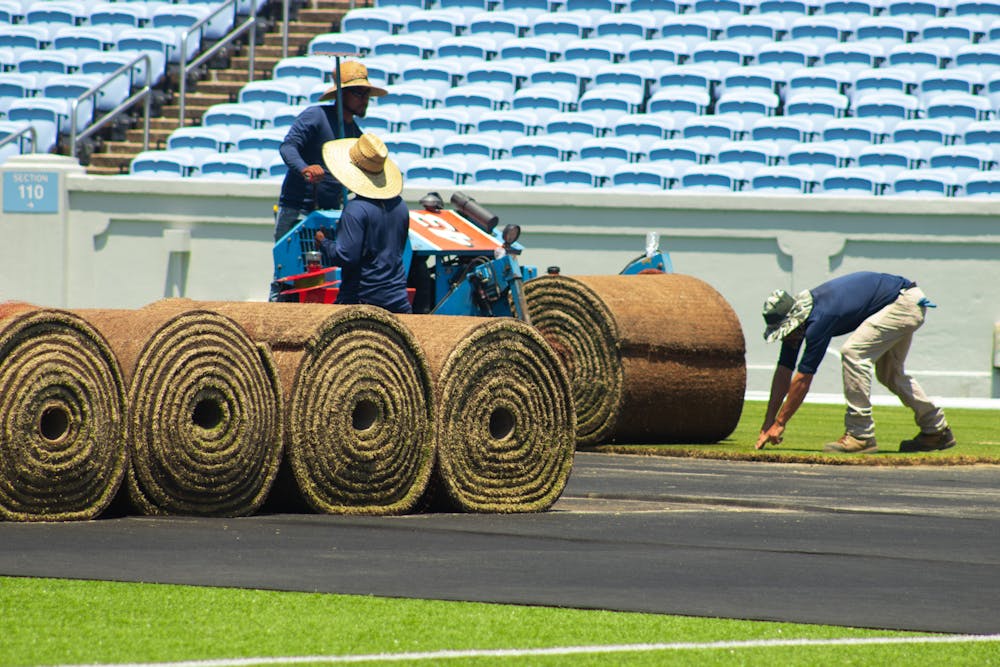In preparation for the FC Series match between Manchester City and Celtic FC on July 23, Kenan Stadium’s turf field has been resurfaced with roughly 90,000 square feet of natural grass sodding.
This is the second consecutive year that Kenan Stadium has been redone the field after last year's Chelsea FC and Wrexham AFC match. The sod — which has been growing for nearly 12 months — was installed on top of the turf, with a thin sheet of geotextile film to separate the two layers.
Earlier this year, FIFA mandated that all World Cup matches must be played on grass. The temporary sodding of Kenan Stadium comes at the same time as five U.S. stadiums prepare to host the 2026 World Cup, where they must use natural grass.
To ensure the safety of the players for Tuesday's game, a series of rigorous tests will be used to ensure the field’s quality is ready for play.
“There is going to be a billion dollars worth of athletes out on the field next week,” Casey Carrick, the director of athletic grounds at UNC, said. “So we want to make sure, first and foremost, that everything we are going to be providing them is safe.”
To achieve this safety standard, the grounds crew at Carolina Green — the company providing the sod installation — have regularly tested the pitch for three variables while the grass has grown.
The first is an assessment of the field’s structural integrity by using a device that claws into the soil and rotates for a torque reading of the root system. This test is important for athlete pushback against the grass, as a field that’s too loose may buckle under the cleat of a cutting player.
A final test evaluates pitch firmness. A device called a Clegg Hammer drops a weighted projectile onto the surface of the field to measure factors like shock continuation and softness. A final reading assesses the field’s speed, with variables like moisture content, firmness and ball roll to accurately depict how fast the field plays.
“What [testing] does is give you some sort of baseline of where the field is at,” Chad Price, president of Carolina Green, said. “Over time you build this data and you get these ranges of where you want to be.”




